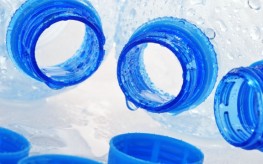Plastic Chemical BPA Leads to Obesity in Young Girls, New Study Finds
Plastic Chemical BPA Leads to Obesity in Young Girls, New Study Finds
A known endocrine-disruptor , Bispehnol-A (BPA) has some nasty effects on the human body.

The study, which flies in the face of FDAand other conventional reassurances to its safety, says BPA could have detrimental effects on young girls, particularly those on the verge of puberty.
Researchers from the Kaiser Permanente Division of Research in Oakland followed girl students between grades 4 and 12 at a school in Shanghai. In all, more than 1,300 children took part in the study.
The researchers measured BPA exposure levels in the urine and divided the girls into groups accordingly. The girls between age 9 and 12 with higher-than average BPA were found to be twice as likely to be overweight or obese. Those who had “extremely high” BPA exposure levels were five times more likely to be in the top weight percentiles.
“Girls in the midst of puberty may be more sensitive to the impacts of BPA on their energy balance and fat metabolism,” said Dr. De-Kun Li, lead researcher.
Thirty-six percent of those with higher than average BPA were overweight or obese when compared with only 21% of those with lower-than-average BPA levels. Interestingly, the same links weren’t found in girls over the age of 12 or in boys of any age.
“Our study suggests that BPA could be a potential new environmental obesogen, a chemical compound that can disrupt the normal development and balance of lipid metabolism, which can lead to obesity. Worldwide exposure to BPA in the human population may be contributing to the worldwide obesity epidemic,” wrote the authors of the study.
But this isn’t the first study linking the plastics-chemical with obesity; one from NYU School of Medicine had similar findings. They discovered that obese children made up 22% of those with the highest BPA levels where only 10% of those with the lowest BPA levels were obese.
Nations in Europe have banned the use of BPA, and even the FDA recognizes this chemical isn’t completely safe—they banned it in baby bottles and sippy cupsback in July 2012. But, they rejected an all-out ban of BPA that same year, saying there isn’t enough evidence that the chemical is that harmful.
BPA can be found in water bottles, food containers, and the linings of canned food. Be cautious, however, because even BPS – used now in “BPA-Free” products has been shown to have similar (or even worse), negative health effects.
Other Popular Stories:
Get The NaturalSociety Natural Health Newsletter!
Post a Comment